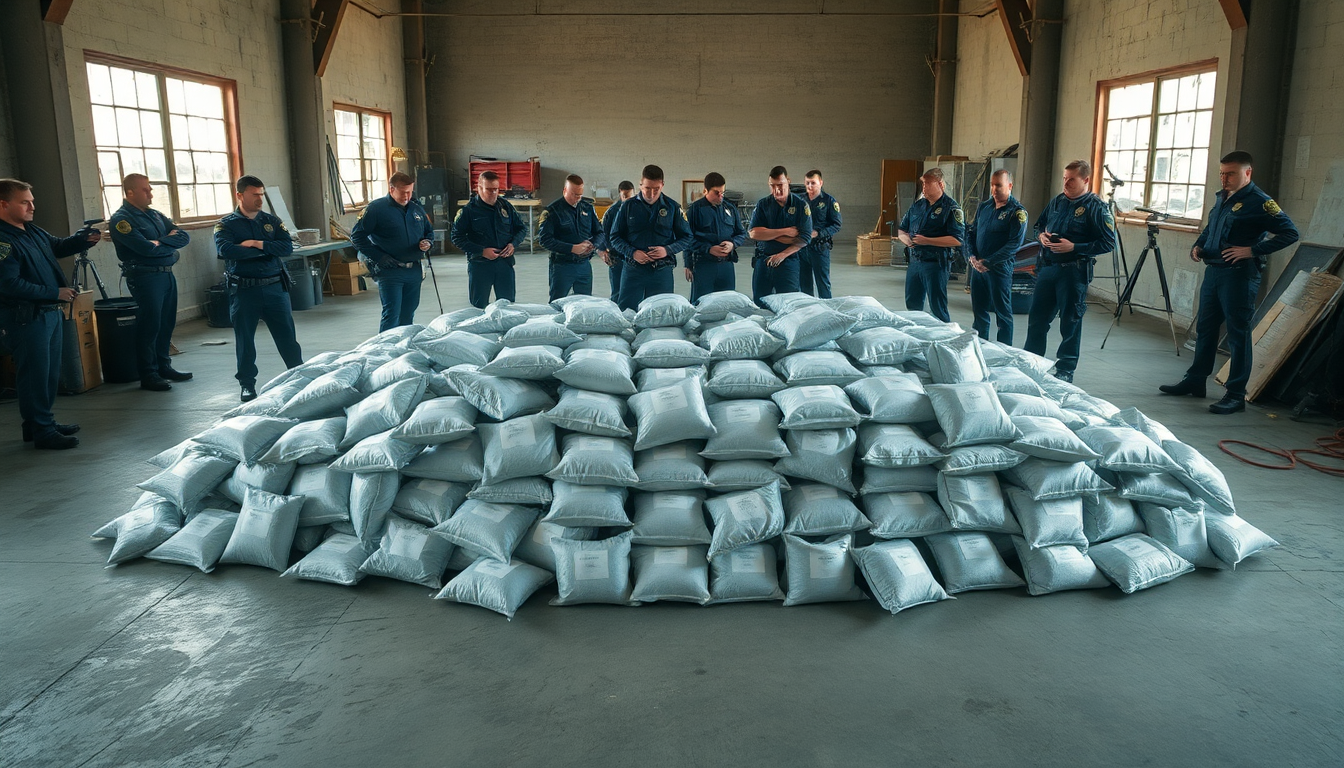Table of Contents
Recently, Minnesota law enforcement grabbed headlines with a jaw-dropping seizure of nearly 900 pounds of methamphetamine—one of the largest in the state’s history. With a street value of roughly $1.7 million, this operation underscores the relentless battle against drug trafficking and highlights the tireless efforts of law enforcement agencies working to dismantle these dangerous networks. What does this mean for the community and the overall drug landscape? Let’s dive into the details.
The Operation Details
On an otherwise ordinary Monday, two suspects found themselves in handcuffs after a well-coordinated operation that involved undercover police work and strategic traffic stops. The suspects, Joel Casas-Santiago and Guillermo Mercado Chaparro, were arrested after authorities noted suspicious activities suggesting drug trafficking. In fact, an undercover officer had previously purchased meth from Chaparro, raising alarms that led to deeper investigation.
As law enforcement kept a close watch, they spotted Chaparro loading suspicious bags into a Jeep. This prompted a search that uncovered a staggering 251 pounds of suspected methamphetamine. But wait, there’s more—the subsequent search of Chaparro’s pickup truck revealed an additional 638 pounds of the drug! The sheer volume of this haul illustrates just how deeply entrenched drug trafficking organizations are in our communities.
Both men now face serious charges linked to the sale and distribution of controlled substances, with Casas-Santiago charged with first-degree sale of meth and Chaparro facing multiple counts of the same charge. Their arrests not only disrupt their operations but also hint at a larger network connected to bigger drug organizations believed to be operating out of Mexico. What does this mean for the fight against drug trafficking? It’s a significant step forward.
The Bigger Picture of Drug Trafficking
The FBI’s involvement in this case is part of a larger initiative aimed at tackling drug-related crimes that have plagued communities across the United States. Dan Bongino, the Deputy Director of the FBI, emphasized the agency’s commitment to fighting violent crime and illegal drug trafficking, noting a 22% increase in drug seizures compared to last year. This statistic reflects a growing trend in law enforcement’s proactive approach to curbing the influx of dangerous substances like methamphetamine and fentanyl.
As authorities work to dismantle these trafficking rings, the impact on local communities can be profound. The prevalence of meth poses unique challenges, affecting everything from public health to safety. Combating these drugs requires robust collaboration among federal, state, and local agencies to ensure effective enforcement and community support. Have you ever wondered how these organizations operate so seamlessly? It’s a complex web that’s hard to unravel.
Furthermore, the connection between drug trafficking and violent crime is a critical issue. As we see in this case, the arrests could lead to further investigations that might uncover additional players in the drug trade. Understanding these networks is crucial for developing effective strategies to combat drug trafficking.
Future Implications and Community Impact
This recent bust serves as a stark reminder of the ongoing issues surrounding drug trafficking in Minnesota and beyond. With significant quantities of meth still on the streets, it’s essential for communities to stay informed and aware of the dangers posed by this drug. Educational initiatives and support programs are vital in addressing addiction and prevention efforts. Have you considered how your community can better support those affected by substance abuse?
As law enforcement continues its fight against drug trafficking, it’s important for communities to engage in open conversations about the realities of drug abuse and its consequences. Recognizing the signs of drug activity and fostering a supportive environment for those struggling with addiction can help lessen the impacts of such operations. After all, awareness is half the battle.
Looking ahead, the collaboration between agencies like the FBI and local law enforcement will be crucial in keeping the pressure on drug trafficking networks. As these operations unfold, the hope is that increased awareness and proactive measures will lead to healthier, safer communities, free from the grips of substance abuse. What changes do you think could make a real difference in the fight against drugs in your area?


